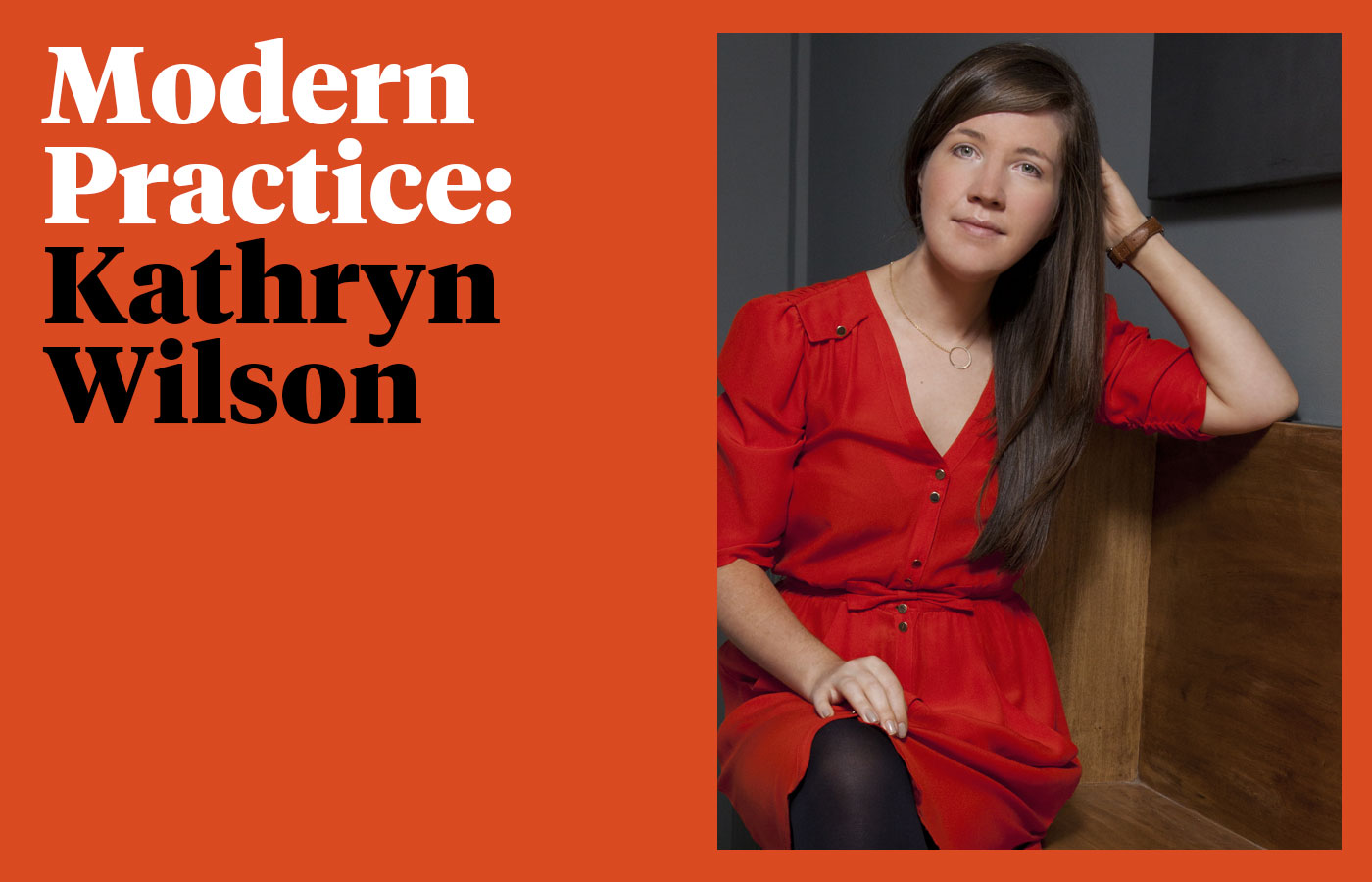What's your background? How did you get to where you are?
I'm from just outside Belfast and at 18 I got accepted onto the Central Saint Martins foundation course so I left school and moved to London. It was a really big change. Even though I'm from Belfast I'd led a pretty sheltered life up to that point and St Martins and London were very different but I loved it. The foundation course was huge and competitive. I struggled that first year to know what I wanted to do with a different area of art or design every two days for the first term. There were a lot of people there who had wanted to go to St Martins knowing they wanted to study fashion or graphics so there was huge demand for those courses and consequently the tutors tried to put us off those disciplines as they were always massively over subscribed. However, I ended up doing a design degree they had running at the time which was a mix of graphic, product and spatial design students, they encouraged us to learn our own 'pathway' (mine was graphics) but also collaborate with each other.
When I graduated I went to work in a small graphic design studio in the city. The good thing about working in a small studio was that they gave me my own jobs straight away. It was also terrifying as St Martins was very strong on teaching you to think conceptually but it wasn't so strong on teaching technical skills or how to use software (that may have changed since I left). My first project in my new job was an annual report and I learnt to use Quark while designing it. I stayed at the company for a few years and gained some really great experience. I left because the studio was small and there weren't many people with more experience to learn from so I wanted to move to a larger company. I also didn't enjoy working in London as much as I had enjoyed studying there so I decided to move. I'd always loved Dublin so it felt like a good time to give living here a go.
I did a bit of research into design studios here and really liked some of the work they were producing. I contacted a few and organised a trip around a number of interviews. I really liked Creative Inc immediately and they offered me a job so I moved over a few weeks later. I worked there for nearly 6 years and absolutely loved it. I learnt a huge amount from the amazing people I was working with and got to work on some really great projects. It was a good place to join as a young designer as I could see potential to grow in the company and having started as a Junior I progressed to Design Director. I left Creative Inc in 2010 and moved to The Brand Union. 'Brand' was a term that was being thrown about in our industry and I wanted to understand more about what it meant. Again, I learnt a lot from the people I was working with in The Brand Union - this time about how they worked on strategy, how they thought about and approached projects and also how they put a presentation together.
I worked in The Brand Union for a year and then Iain Slater approached me as he was moving his studio to Dublin and he asked me to join the company as Creative Director and a Director in the company. As none of the designers working in the Slater's Belfast office at the time were moving down I contacted Sinéad (who I'd worked with in Creative Inc and was just back from a few years travelling) and the three of us built the studio in Dublin. We've been here for almost four years now and today there are seven of us. I think we have enough work coming in to grow a little further but we're at the point of questioning whether we want to grow any more because the more you grow the harder it is to maintain a standard you're happy with.
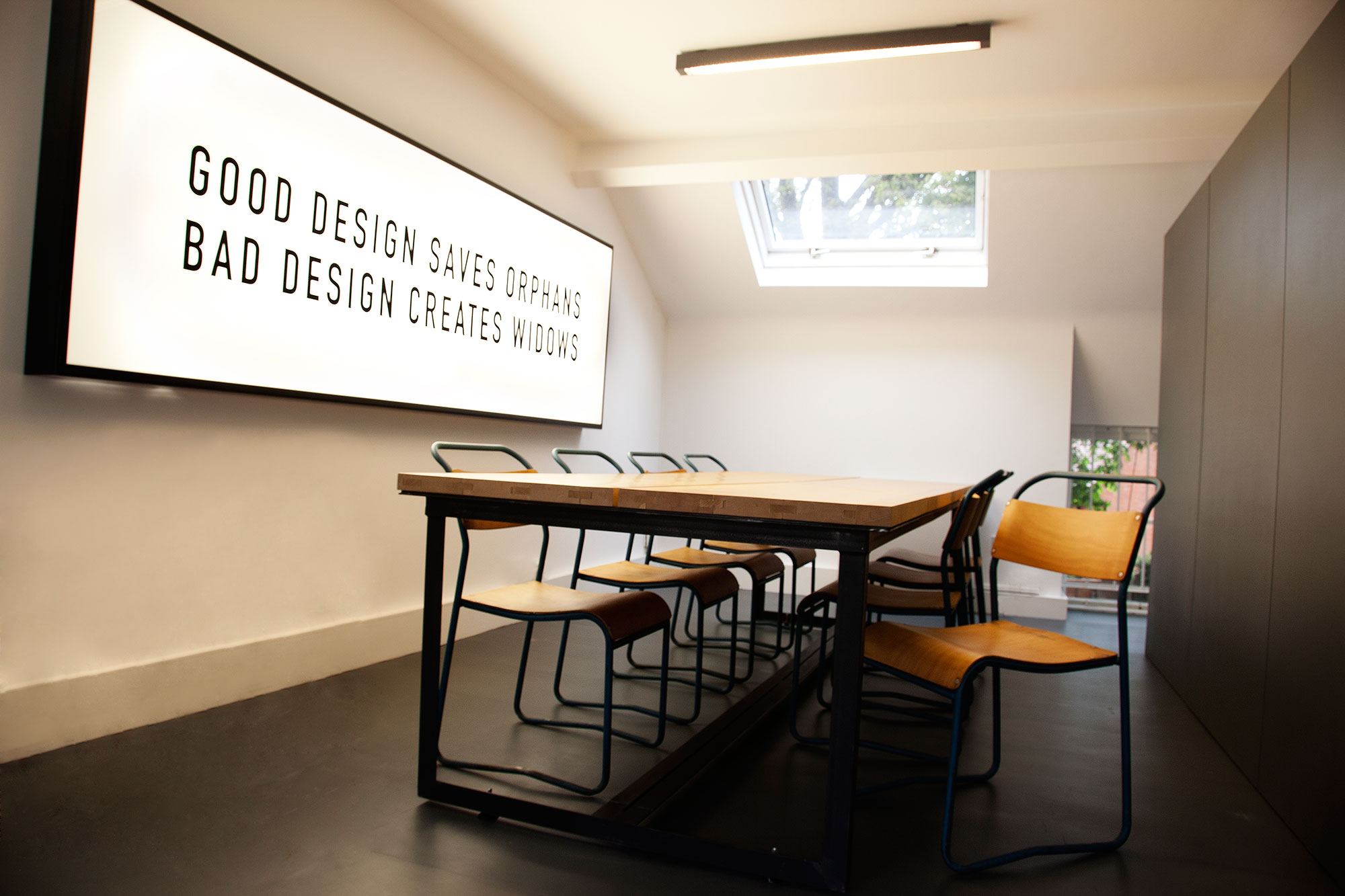
How would you define your role / practice right now?
I'm Creative Director of a small graphic design studio of seven people. Five of us are designers and we work on a lot of very commercial projects and brands. We design all the collateral you'd expect of a traditional graphic design studio and we're increasingly being asked to design for new mediums. I think we're seen less by our clients as a graphic design supplier who can fulfil their need for a new flyer as someone who can help them communicate better and also help them grow their business.
Do you think that definition will change?
I wonder if there is a set definition for what we do in a graphic design practice these days. I imagine there are studios that are still quite specialised in certain areas but I think for most practices we're increasingly being asked for more than the logos, print, packaging, signage and websites we've been asked to design in the past. We also work on strategy, we help an organisation in their thinking, how they organise themselves, how they can work better and how they can communicate what they do. I think there's an increased awareness that design can do more than make something look good. We're really just at the start of that understanding in Ireland but I hope that will grow because there are so many government projects and areas of business that could benefit from the problem solving mind of a designer on the team.
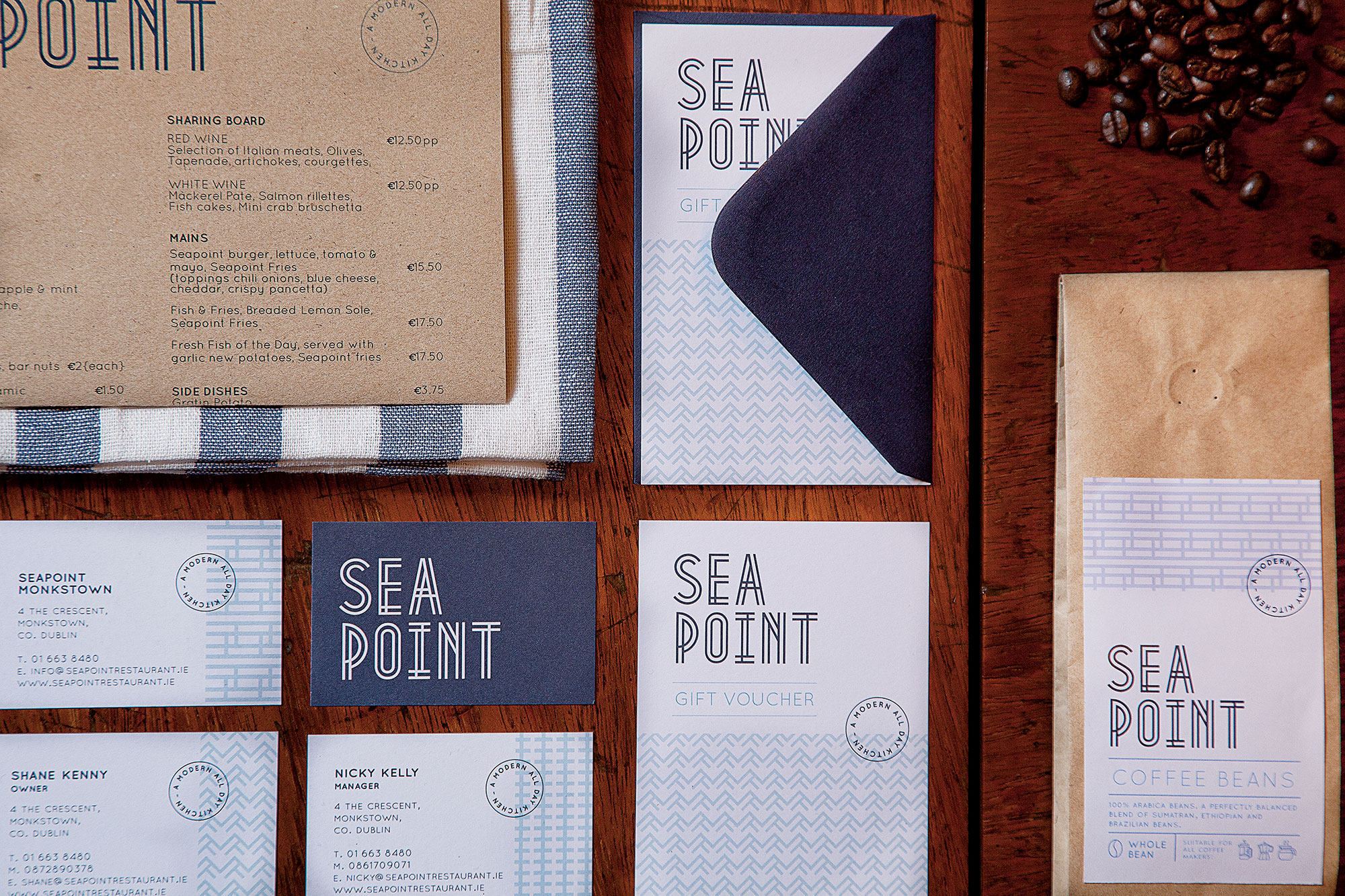
What do you set out to do with your work?
My first thought is always how can I answer the brief or the client need. Our work is commercial, it's important that we design for our clients' audiences and not for ourselves. That's not to say we can't try and produce work that we're proud of but if it doesn't work for the audience it's intended for and isn't effective then we haven't done our job well.
What's your motivation?
To produce good work. By that I don't just mean work that looks good, though that's part of it, it's also about the work answering the brief, meeting the client's needs and a piece of work being effective. There's lots of work out there that is technically very good and it might mimic the latest design trends but is wildly inappropriate for what it's supposed to do, for me that work doesn't engage and lets the client down.
I'm also motivated all the time to try and do better work - to make work that I'm proud of and that we're proud of as a studio. Increasingly that's not just about making my own work better but also helping others to do better work and to help them develop in their careers.
And at the end of the day I'm also motivated to earn a living. We're all very passionate about our work, but it is work. We're also there to make a living and to enable our lives outside work.
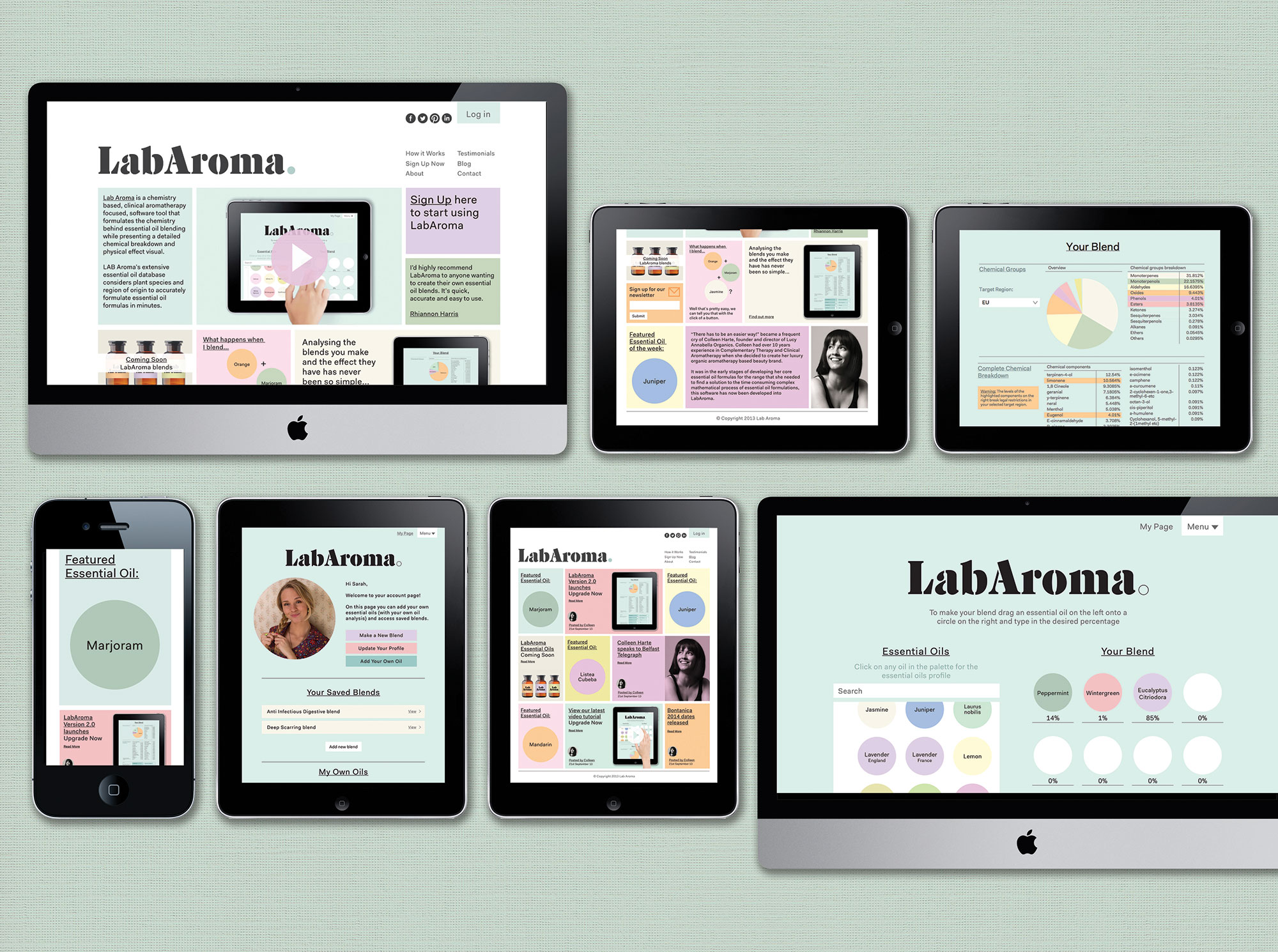
What values do you try and instill in your work?
I try to be honest and do good work.
What is the main focus of your practice?
Our work is very commercial and proudly so. I think there's a place for commercial work that is well executed as it's the stuff that surrounds us every day. Therefore, I feel that a burger restaurant, a food concession in a stadium, a piece of food packaging or an optician should be just as thoughtfully treated as an art book or cultural institution. These commercial projects we work on should be a pleasure to interact with as you go about daily life.
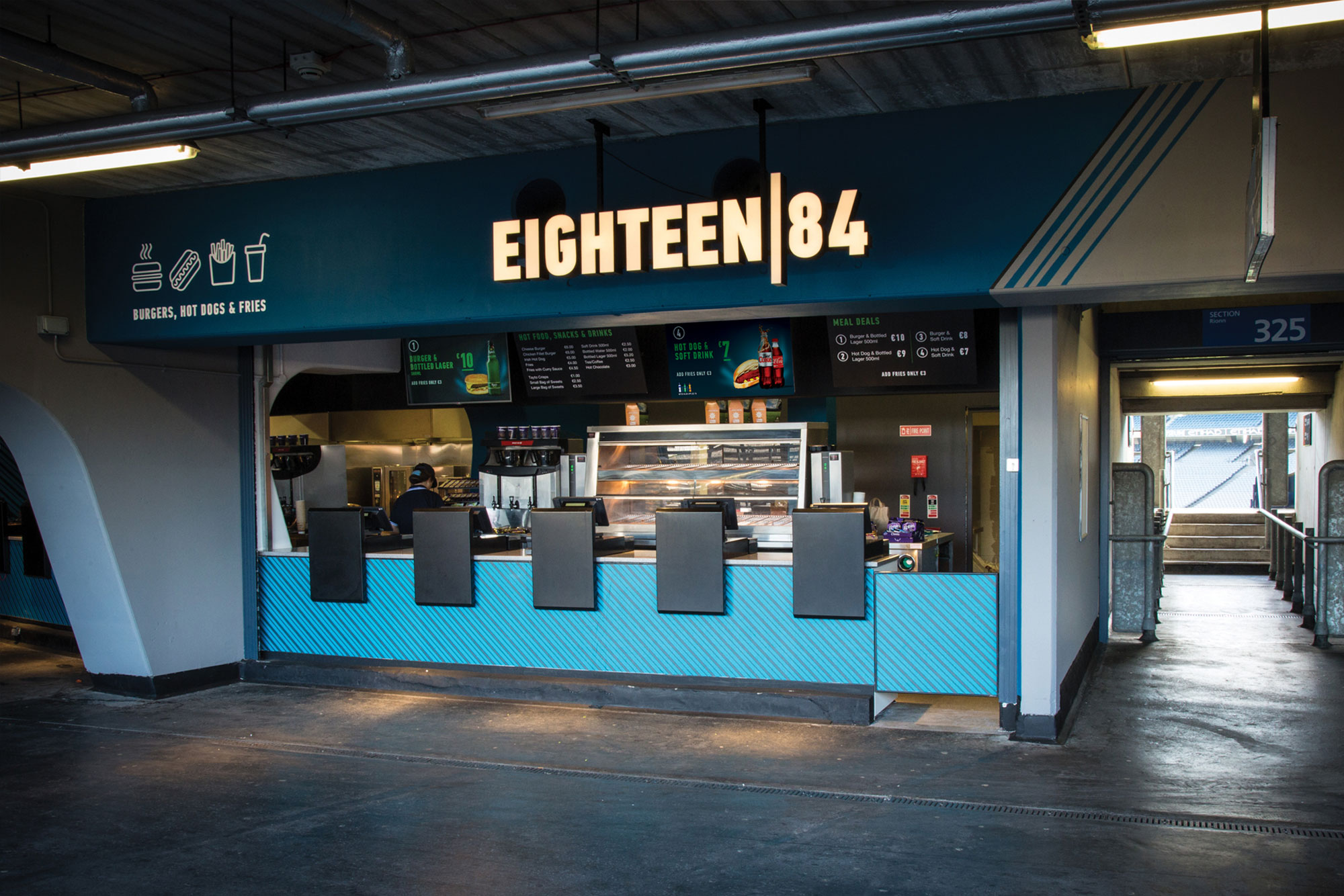
What are the areas you work in?
We work with a lot of food, fashion, beauty, retail and interior brands and we're increasingly doing work in the music industry and for sporting organisations. We work with a number of big clients for whom we have a lot of ongoing work and then we also work with lots of smaller clients who are maybe startups or small indigenous Irish companies. As I mention later on we're increasingly producing work for these brands in many different mediums, there are many different outputs which are appropriate to the client or project.
What is the scale of your projects?
From a postcard to 49 food concessions in a stadium, it really depends on what the client needs.
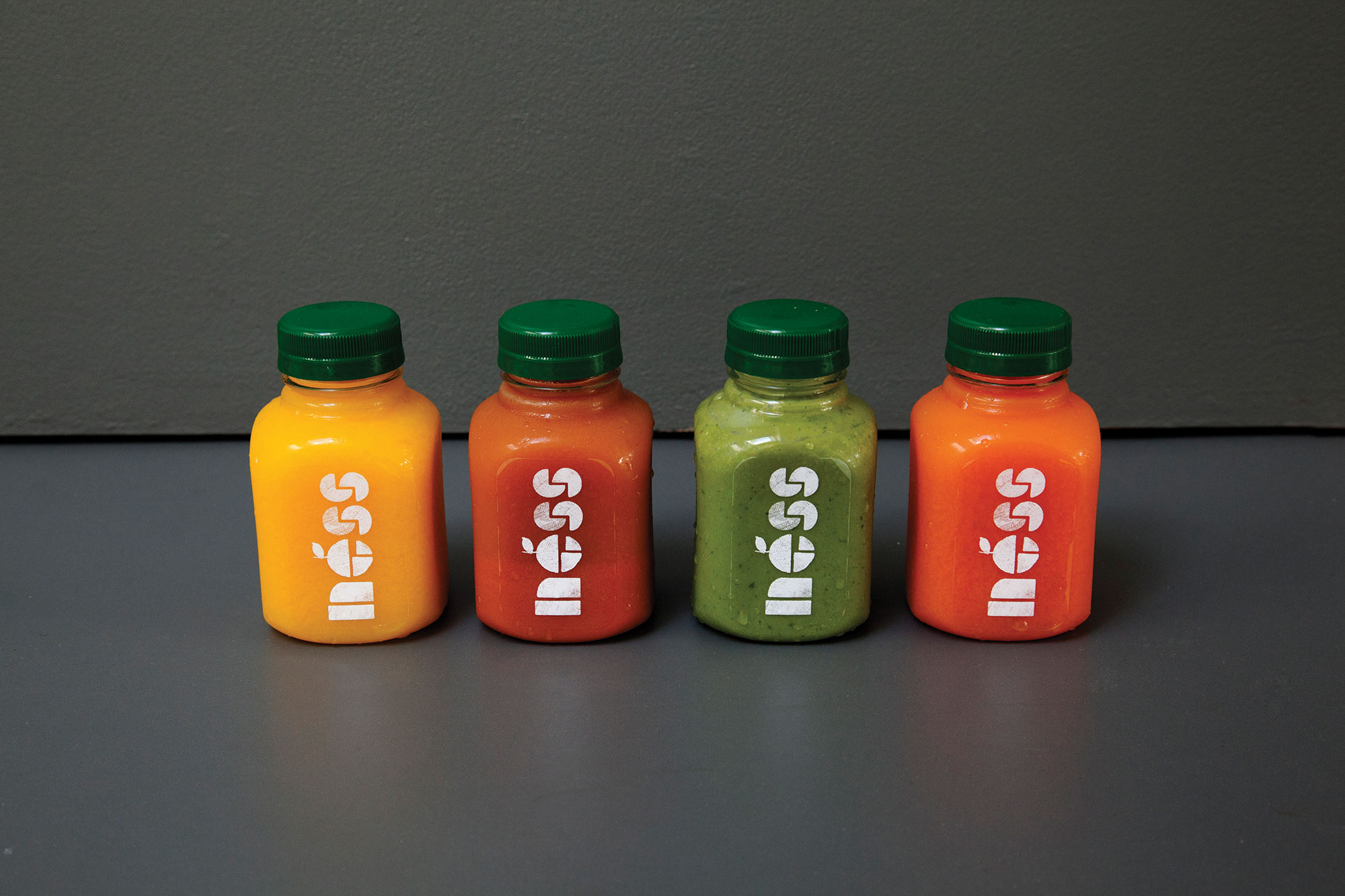
How many projects do you undertake a year?
That's really hard to quantify because there are a lot of projects! I keep a list of the work I have on and from this I can tell you that I personally have 16 active clients and within these clients there are anywhere between 1-15 active jobs for these clients. Those jobs can be anything from a small job like a poster to a large job like a website, new brand or range of packaging. Looking at the list of work I've completed from March to July, I've completed 64 projects of varying scales.
I'm not sure how this will measure up to other people answering this question, my sense is that it's a lot judging by the studios I've worked in previously. The reason we work on a lot of projects is because we have a lot of clients and we have 5 people to do the work. As we emerge further from this recession I'd hope we could increase our prices a little and take on less. That would be important to me as I think when you're working on so many projects the time you have to think about a project is much reduced and also the time you have to finesse it comes under pressure. I think we have better work in us and the pace we work at frustrates me sometimes as you can see how you could have done something better.
The other designers in the studio will have their own clients and projects and the amount will depend on how much experience they have and how long they've been with the company. It's important to us that the guys working in the studio actively try to build their own set of clients from the jobs they're given because developing existing clients ultimately takes the pressure off needing masses of new business.
How long are your timelines?
It very much depends on the project. When you have a lot of long term clients you tend to have lots of jobs of varying scales from the small day to day things they need (for which you might only have an hour or two) to a big project which you might have 5-10 days on spread over a number of weeks. It would be unusual for me to have one client/project I would work on solidly for more than max 2-4 days at a time as you're generally mixing a few jobs for a number of clients in a week unless it's a really big project. We have a few bigger projects which might be completed over a number of months (though we wouldn't be working on them solidly) however that's unusual for us.
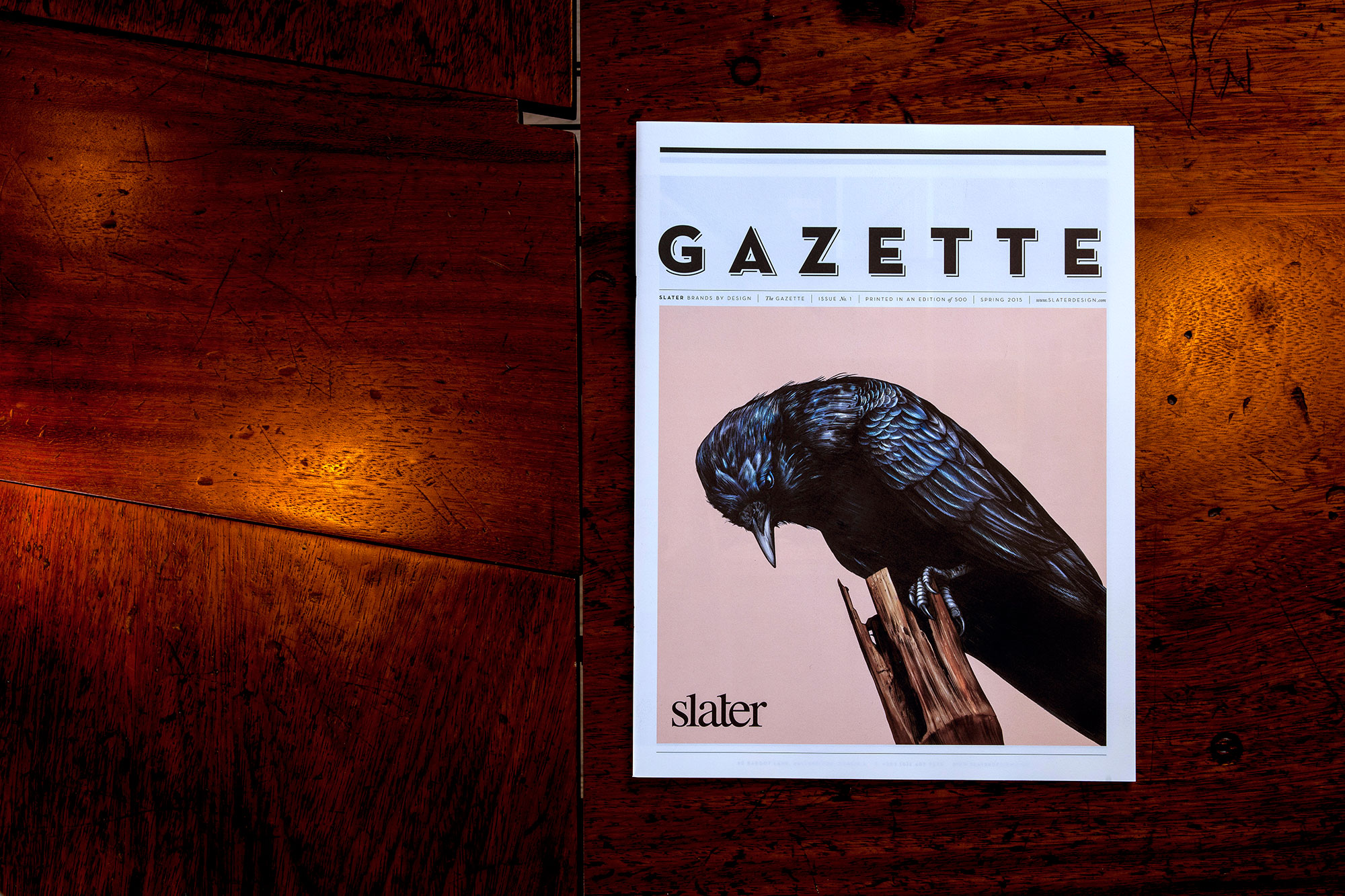
Can you give an indication of the budgets you work with?
As I mentioned in the previous question the timelines and scale of the projects we work on varies vastly and therefore the budgets do as well. A project can be anything from a small amount of money based on our hourly rate for a really small simple resizing job to 35-40k for our biggest job over the past 4 years which we worked on over a number of months. We don't randomly come up with a figure, we work out the process for a large project and estimate the number of hours the job will take and then calculate the cost based on the hourly rates we have for each designer.
Can you give us a sense of what your working week would be like?
What I'll describe is how we try to make it work but it's really hard to make this happen all the time. On a Friday afternoon Iain, Sinéad and I try to sit down at 3.30pm to go through the work completed in the studio that week and to schedule in the work for the following week. Then on a Monday morning we go through the schedule with everyone. Unless it's the start of a project, when we might have a few people working on a project, everyone generally has their own projects to work on and their own deadlines to meet during the week.
The schedule is good because everyone knows what they should be working on and it allows us to see when there are projects that are just dragging on and on! However, in my role the schedule doesn’t always work as well. I schedule in 8 hours work a day for myself and I have as many of my own projects on as anyone else but inevitably it's hard to stick to this as there will be unexpected client meetings, sitting down to talk to designers about what they're working on, checking design and artwork as well as company related bits and bobs. It's difficult because obviously you have your own clients that you can't let down but then there are a lot of studio demands as well and it's really tricky to do both effectively all the time.
I try not to work late on work projects in the evening and don't work at the weekends. I've done it plenty in the past. As a young designer I did it a lot just to try and keep up and develop my skills. For me now I just don't think it's productive. If it gets to the stage where that's the necessity it's because something's not working properly or structured properly. When we set the office in Dublin up I worked late a lot and on weekends but now the studio is well set up this shouldn't be necessary. This inevitably doesn't work all the time but for the most part it should be possible once the designer is committed during the day to getting on with their work.
I take on a lot of other design related things; I’m President of ICAD this year, I’ve been on the Archive Panel for the 100 Archive for the past two years, I’m judging at the IDI Awards this year and I’ll be writing some articles for the 100 Archive blog over the next few months. Those are the things that just don't fit into the working week and tend to take up some evenings and weekends. I enjoy being active in the design community but it can be demanding in addition to your job.
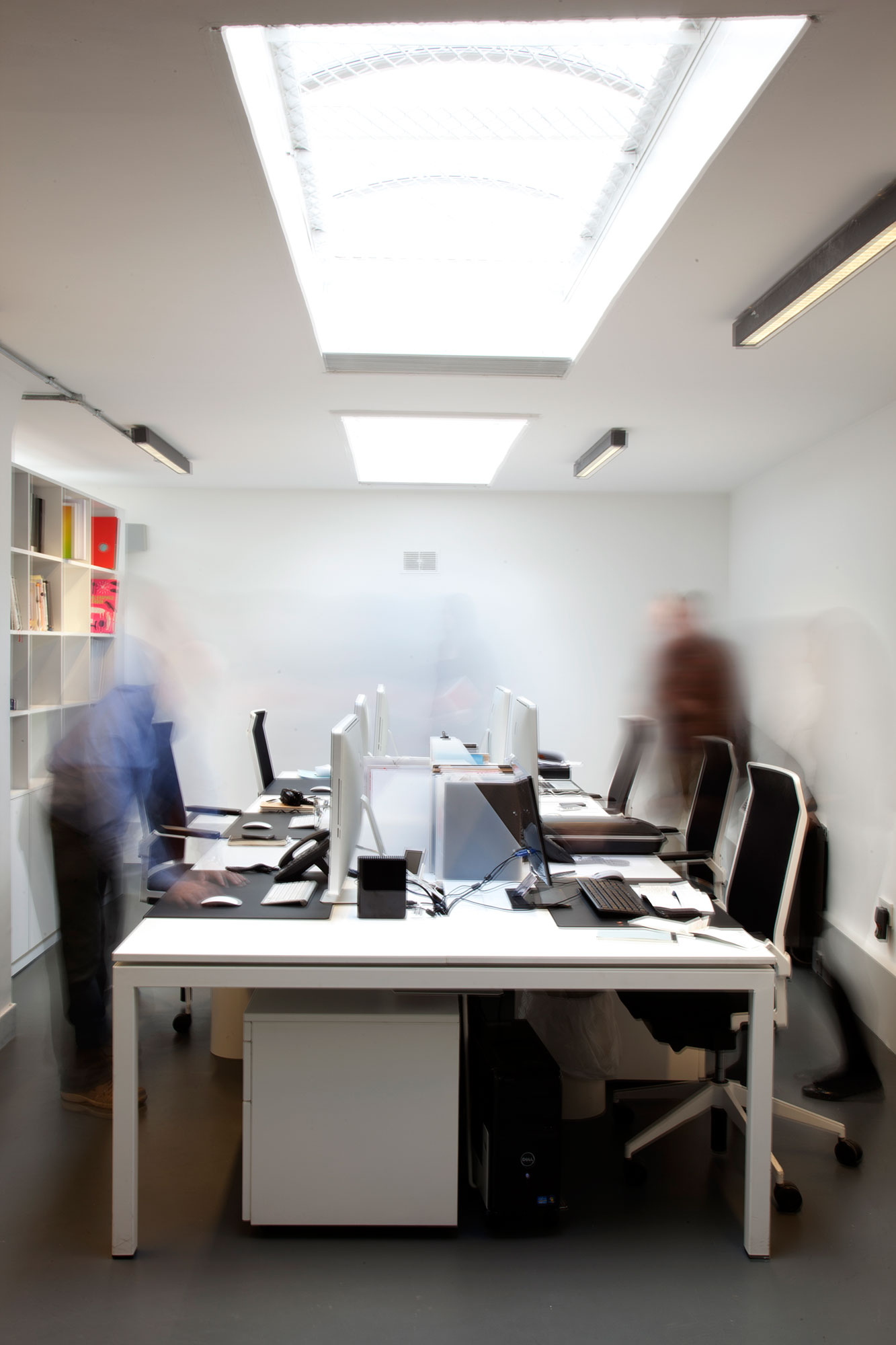
What type of outputs/outcomes do you deliver?
A few years ago I probably could have reeled off a number of outputs we might have delivered within a project: logos, print, books, packaging, signage, websites etc. We still design all of these things but I think it's increasingly the case that the outputs are less defined at the beginning of a project or it might be the case that the expected outcomes are challenged during the course of a project as it might be found that these don't fit that well or won't be effective enough. I think that because there are so many ways you can communicate today we're well past the stage that it is acceptable to design a logo and apply it to a set of stationery and a corporate brochure. Our clients come to us expecting more than that.
Generally we have long term working relationships with clients so whilst they may initially come to you for a specific project once you're working with them in the long term you become valuable to them as an asset to their business and someone who actively tries to help them grow. Therefore you quickly get to the stage where they come to you with an idea and how you communicate that idea is something that you both contribute to. It also allows you to actively suggest things that you think they should be doing.
I think a good example of this approach was in a project we completed for Croke Park last year. When they initially briefed the project to us it was to design new fascia signs and counter fronts to tidy up the 50 public food concessions at the stadium. When we looked at the units they were in really bad condition and replacing a fascia sign and counter front wasn't going to be that effective. So we brought an architect we work with on board and together we put together a proposal outlining a much more effective revamp of the units and also proposed a concourse signage programme, options to brighten up bleak concourses, a food park in a large open space and floor markings to help make queueing more organised and thus less frustrating. We went far beyond what we were briefed should be the outcome to the project. We wanted to deliver a proposal that we felt could achieve the very best outcome. I'd say 85% of the proposal was actually implemented and the pieces that were not carried out were due to budget constraints. I feel that we delivered a really good outcome for the client and real value for the money they were investing in the project which replacing a few fascia signs and counter fronts wouldn't have done.
In our proposal to Croke Park were outcomes that were outside our experience or wouldn’t traditionally have been thought of as a graphic designer's role but I think that's increasingly going to be the case. Today, it's as valid that an outcome to a project would be a web film or social media campaign as a piece of print so you have to be quite flexible in your approach. Therefore the way you think as a designer is as important as your design skills - it's about applying the ability to problem solve and arrive at the right solution. The right solution might be something you've never done before but I think we're a resourceful bunch and you can always work with others who do have that expertise to be able to make pretty much anything.
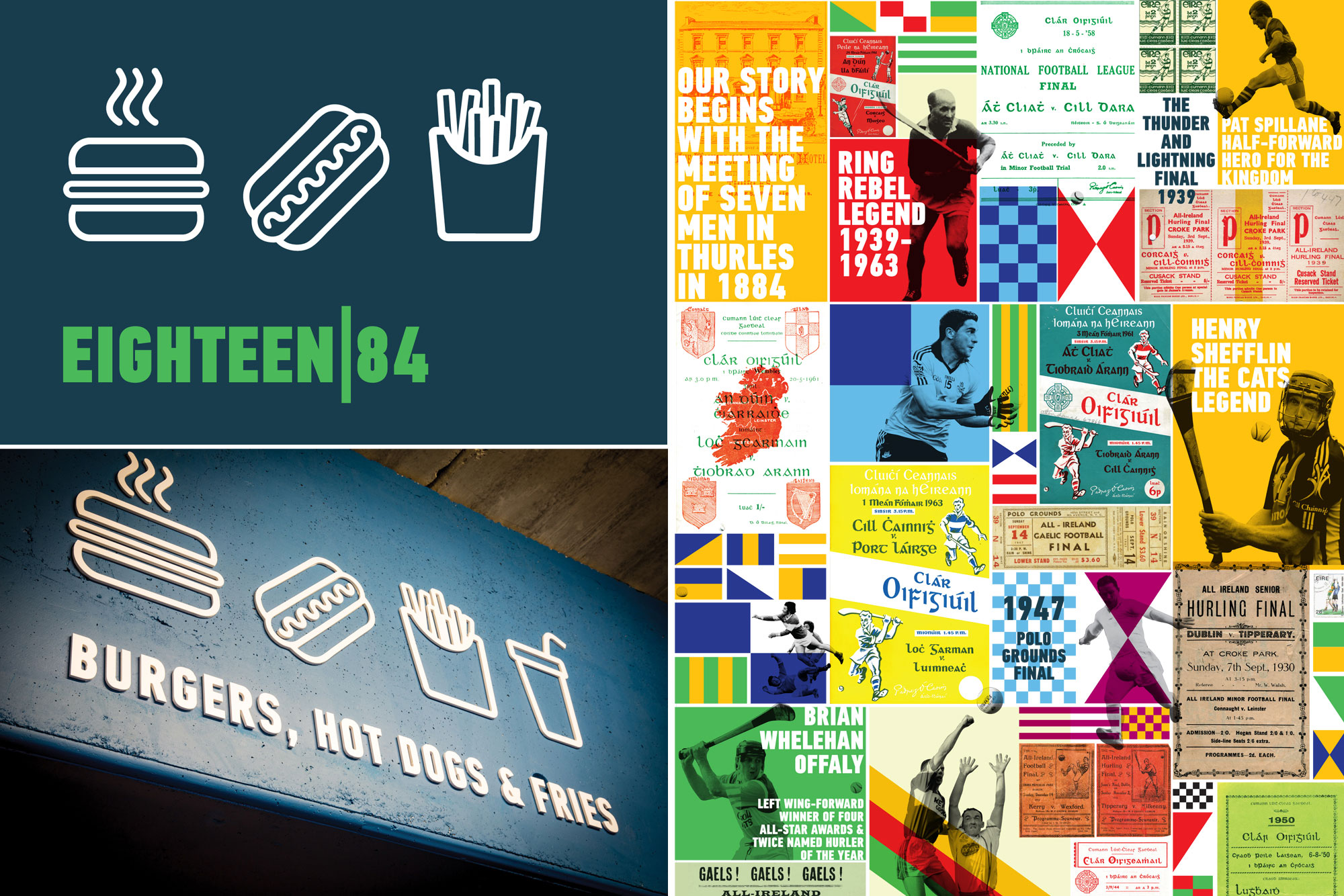
Do the people you work with understand what you do / understand the value?
I think we've built a group of people and clients around us who do understand the value of what we do. Most of our work comes through word of mouth and through clients and friends of the company recommending us for projects so we don't really tender and never cold call.
We talked about this recently, we think we could trace a lot of the work we get through other jobs and it would all become a big web of connected people and projects. I think this happens because, for the most part, we really get on with a lot of the people we work with. We can have a laugh with them and we feel that working on design or branding should be fun for them and we have respect for their input, their opinions and the money they're spending with us. I think the more that you try and get on with a client the more you'll all enjoy the process and the more likely they will be to come back to you again and again. That's one of the things that I think we all struggle with as juniors is the realisation that it's not just about the panic of getting something done, it's about an enjoyable process and a good outcome.
I think because of the way we get new business and by our approach to working with clients they do understand the value of what we do. We also let them know we want to help them grow their business over a number of years and for some clients we've been working with for a long period of time they can see that happen. Of the 16 active clients I'm currently working with there's only one of them I've been working with for less than a year, most have been my clients for the last 2-4 years. I don't think they'd continue to give us work if they didn't value what we did.
What do you consider a successful project to be?
A project that surpasses the clients expectations and one that we're happy to have in our portfolio. It has to first and foremost be a project that the client is happy with and works well for them. We can't ever try and create portfolio pieces for ourselves above this as we'd be doing the client a disservice if we did. A successful project for me is when the two things come together.
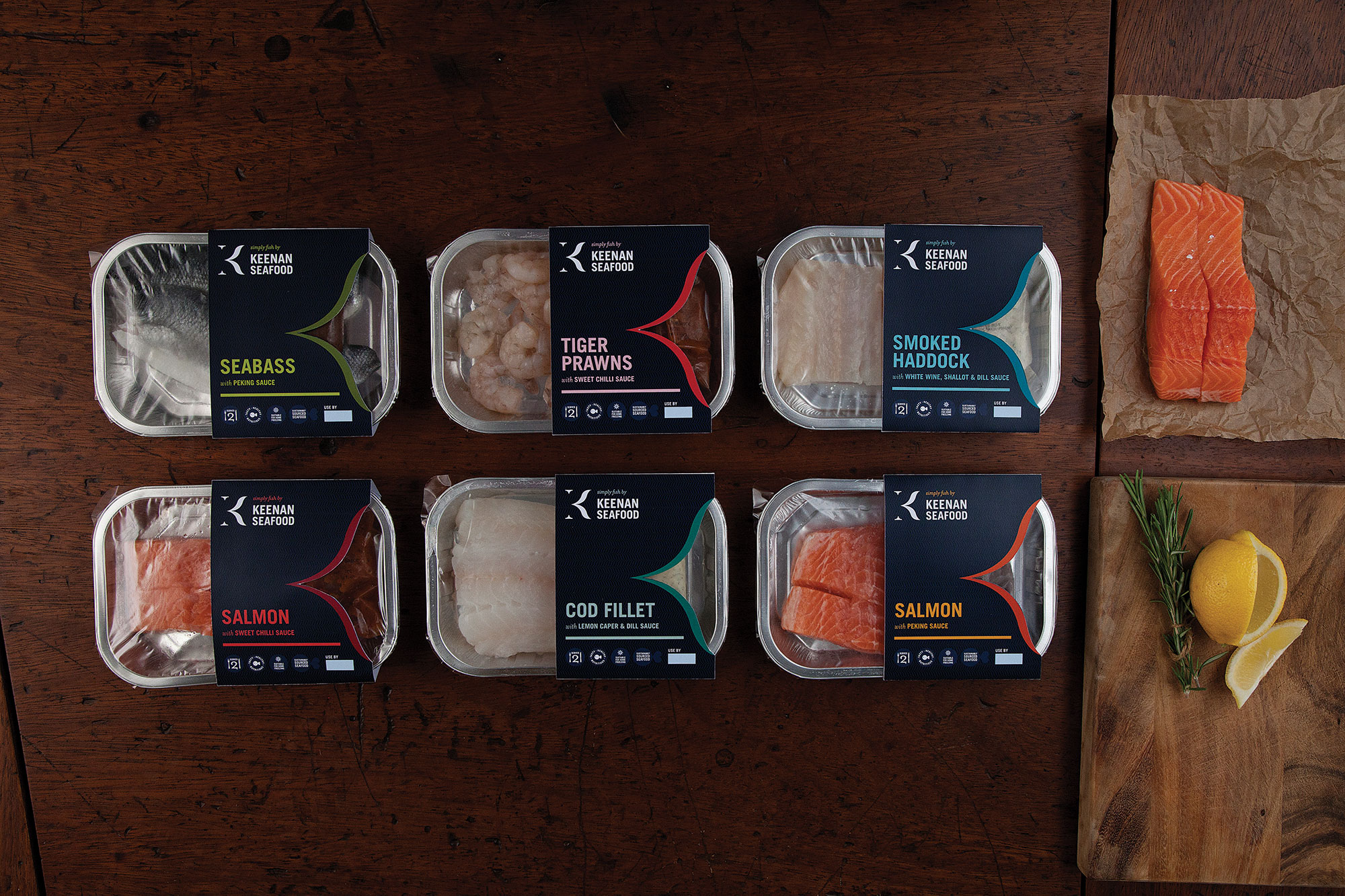
What do you feel is the impact of what you do?
As we primarily work with small businesses and individuals I think the impact is to help those small businesses and individuals grow their business and their livelihoods. We're only one part of that but it does help contribute.
What's the most important thing to get right in order to do your job properly?
To listen. That's been the most important thing since I began working as a designer. When I was younger it was important to listen to those above me and the brief on a project. Today it's primarily about listening to the client. You don't have to answer a brief exactly as it's outlined to you but you have to understand the sentiment of what it is the client is looking for. The second most important thing is to be a sound person with the clients, if you approach them with negativity you're only ever going to get negativity back.
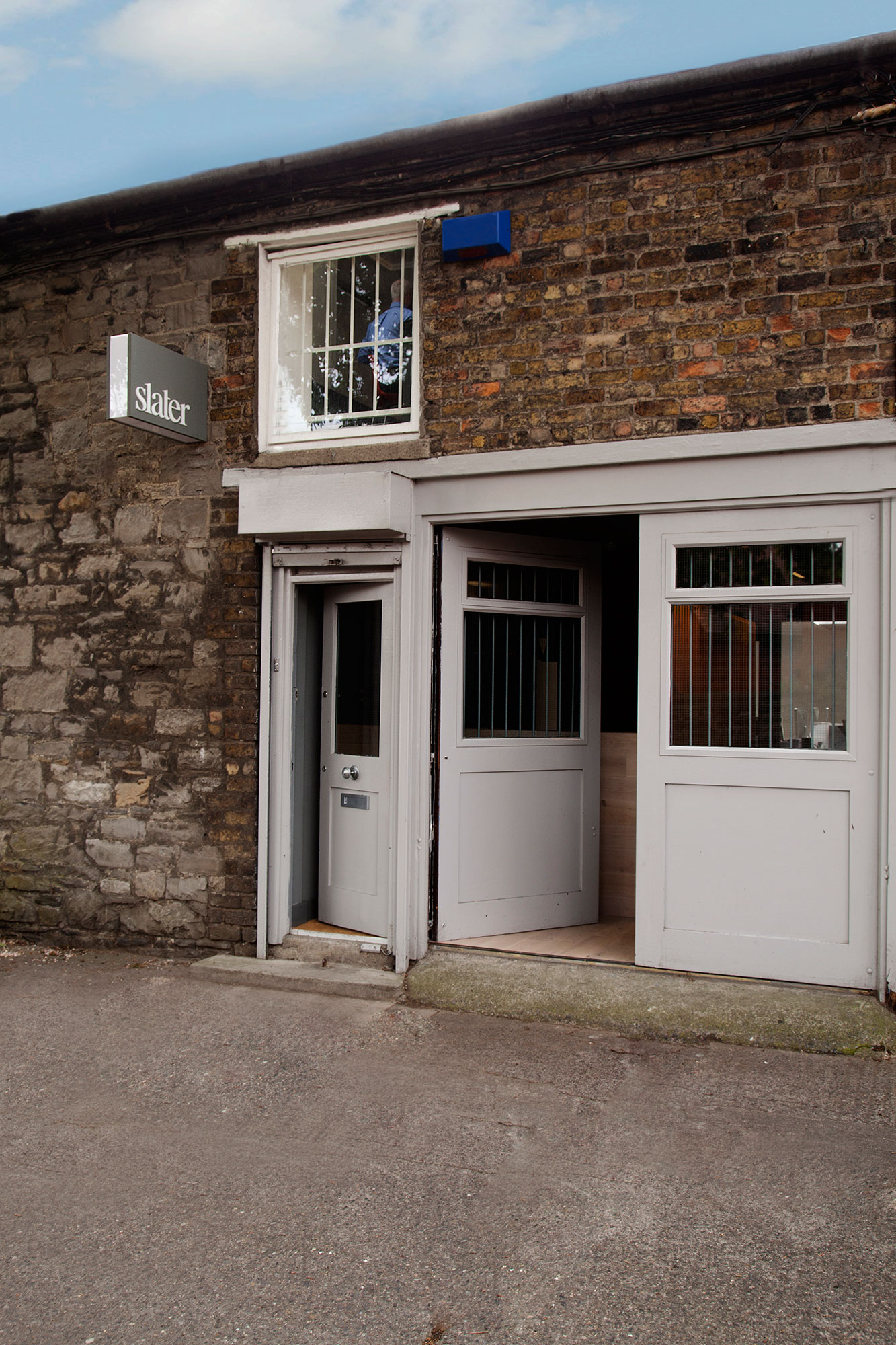
Are you working the way you want to? What would you change?
I'm largely working the way I want to. I think you get to the stage where through experience and making mistakes you just figure out how to do the job - that must be the same with any profession. So I think in the way I tackle each project I approach it in largely the right way and can figure out a good solution.
As mentioned before there are things in the way the studio works I'd like to change, like having more time to work on projects, but we're a young studio so we're still working on that. I don't know that we'll ever stop trying to improve on how the studio works.
As a designer I'm personally always looking to improve and to do better work than I've done the year before. I look back on the 100 Archive at work I've done the previous year and don't feel satisfied with it so I still have a huge enthusiasm for the work I do the next year and trying to make it better. I actively try and improve the work I do - this year I'm looking forward to writing the articles for the 100 Archive because it's things like that and a typography course I'm doing in New York in August that will help me improve in terms of my analytical thinking and my design skills.
